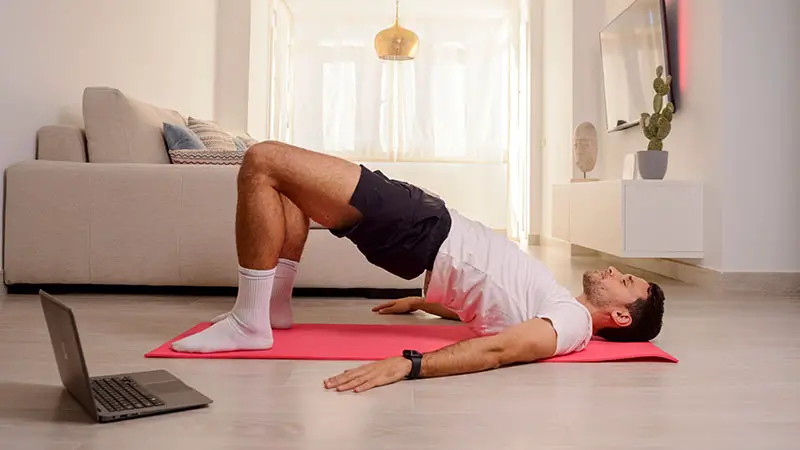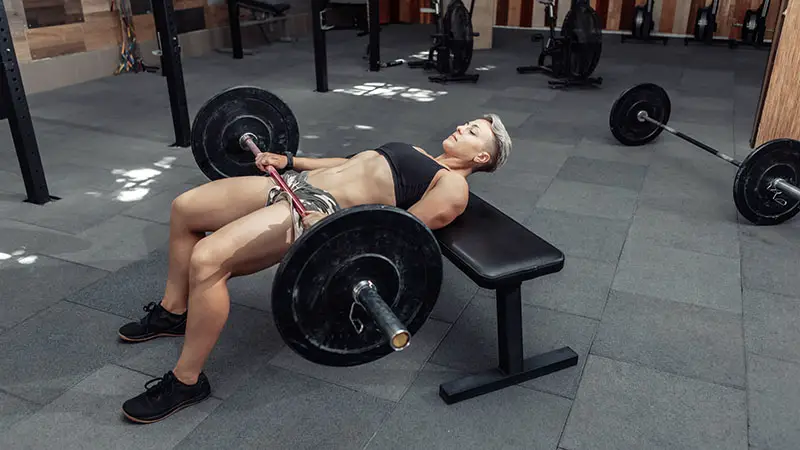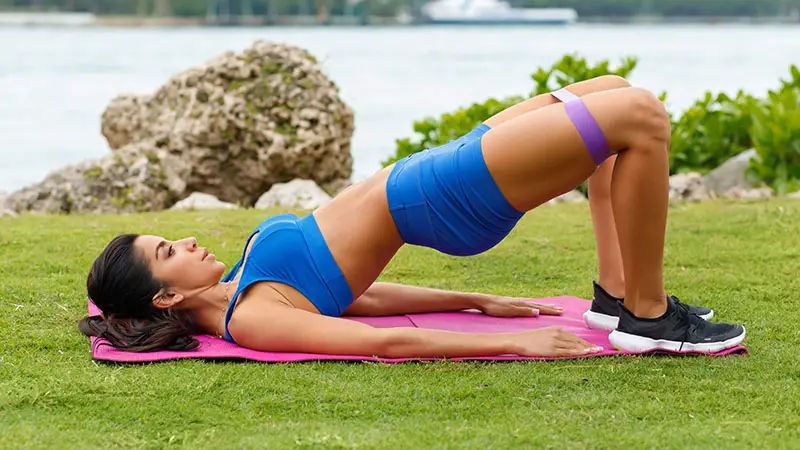Contents
Glute Bridge vs Hip Thrust
Kim Kardashian, Channing Tatum, Jennifer Lopez, Chris Evans. Not only are these celebrities known for their various pieces of work, but they are also well known for their shapely, perky butts (booty, rump, tush, derriere, buttocks). Let’s face it, everyone wants a nice tight rump, but other than for aesthetics, do you know that having a well-maintained rear end plays an important role in your health, as well as your daily and athletic performance?
Your gluteals, the maximus, medius, and minimus are more for just sitting on and looking good, as they are responsible for helping to keep your body upright and balanced, assisting in directional movement, and in most daily activities. As the biggest muscle group in your body, having a healthy set of glutes not only helps with daily movement but also assists in reducing back pain and knee pain.
Glute bridges and hip thrusts are a great warmup exercise for athletes prior to engaging in your sport of choice or for the general population who spend most of their time sedentary. Let’s compare these two effective exercises for strengthening, toning, and shaping the junk in your trunk, the Glute Bridge vs Hip Thrust.
What is a Glute Bridge?

A glute bridge is an exercise (with variations) that helps establish core stability, increasing glute strength and helping to improve your overall ability to move, exercise, and function. In addition to your glute muscles, this exercise will use your hamstrings and abdominals. There are numerous variations, including bridge pulses, single-leg bridges, the use of resistance bands, and elevated feet.
How to do a Glute Bridge
The great thing about glute bridges is that they can be done anywhere that you have space to lay down and they can be done with and without any equipment.
- Lay flat on your back with your feet flat on the ground and knees bent, and place your feet approximately shoulder-width apart. Your heels should be approximately 6-8 inches away from your glutes. Your arms can be flat at your sides, or have your upper arms on the ground and your forearms in an “L” shape, or raise your arms completely up in the air, depending on your stability.
- Engage your glutes (squeeze your cheeks) and your abdominals as you slowly raise your hips upward. As you lift your hips, do not allow your back to arch. Your goal should be to have your hips in line with your knees, hips, and shoulders.
- Hold the lift for a two-count at the top, keeping your glutes engaged.
- Slowly lower your hips to the ground, keeping all muscle groups engaged.
- Repeat for reps
- The focus muscles in this exercise should be your glutes. If your hamstrings are dominating the lift, move your feet closer to your glutes.
Glute Bridge Benefits
As mentioned, glute bridges help build glute strength and core stability and improve your exercise form and function. Exercises such as walking, running, jumping, squats and deadlifts will all benefit from glute bridges. In addition to strengthening your glutes, you may also see a reduction in lower back and knee pain.
What is a Hip Thrust?

As with the glute bridge, a hip thrust (or hip thruster) is an exercise that targets all three of the gluteal muscles, as well as muscles in your lower back, legs, and abdomen. While most people include some sort of weight (barbell, dumbbell, weighted plate) into the exercise, like the glute bridge, it can also be done with just your body weight.
How to Do a Hip Thrust
- If you are unsure how to use the bench properly for a weighted hip thrust, try the movement without weights first to establish your balance and become familiar with the range of motion. From there, you may want to then use just the bar without plates so you can practice getting into and out of the position, especially when you do not have a workout partner to assist you.
- You may wish to wrap a pad or towel around the bar to protect your hip bones.
- After loading the bar, set up the bench behind you. Begin in a seated position on the floor with your knees bent and feet slightly wider than hip-width apart. Rest your upper back against the edge of the bench in the middle of the bench.
- Rest the weight bar across your hips
- Engage your glutes and press the bar upward until your hips are in line with your knees and shoulders. Keep your chin slightly tucked and your core tight.
- When your hips are fully extended, aim to have a 90-degree bend at the knees.
- Slowly lower your body down until your hips are a few inches off the floor.
- Repeat for reps.
Hip Thrusts Benefits
Weak gluteal muscles are often associated with sore knees, tight hip flexors, back pain, pelvic alignment, tight hamstrings, and poor movement mechanics. As a great alternative to squats for working on your booty, hip thrusts take some of the pressure off of your knees. With stronger gluteal muscles, exercises such as cleans and snatches will become more explosive.
5 Differences Between Glute Bridge vs Hip Thrust

Glute bridges and hip thrusts often get confused with each other. However, both are great exercises for improving your rear end. Here are 5 differences between the glute bridge vs hip thrust.
- The one major difference between the two exercises is that one is primarily a bodyweight exercise, while the other involves using weights and a bench. While both can be done with modifications and have variations, the hip thrust is more challenging.
- Glute bridges are easier to set up, which means that they are better for beginners or for a workout warmup.
- Hip thrusts require a greater range of motion and will work your glutes more due to the inclusion of weights.
- When it comes to positioning, glute bridges are performed while lying on the ground, whereas hip thrusts require using a bench to support your upper back, leaving your lower back unsupported.
- Hip thrusts also involve greater hip flexion than glute bridges as your shoulders are elevated on the bench, resulting in a greater stretch of the glutes and increased range of motion.
